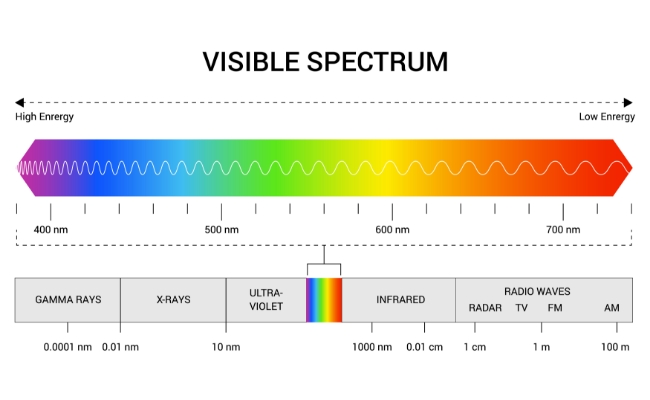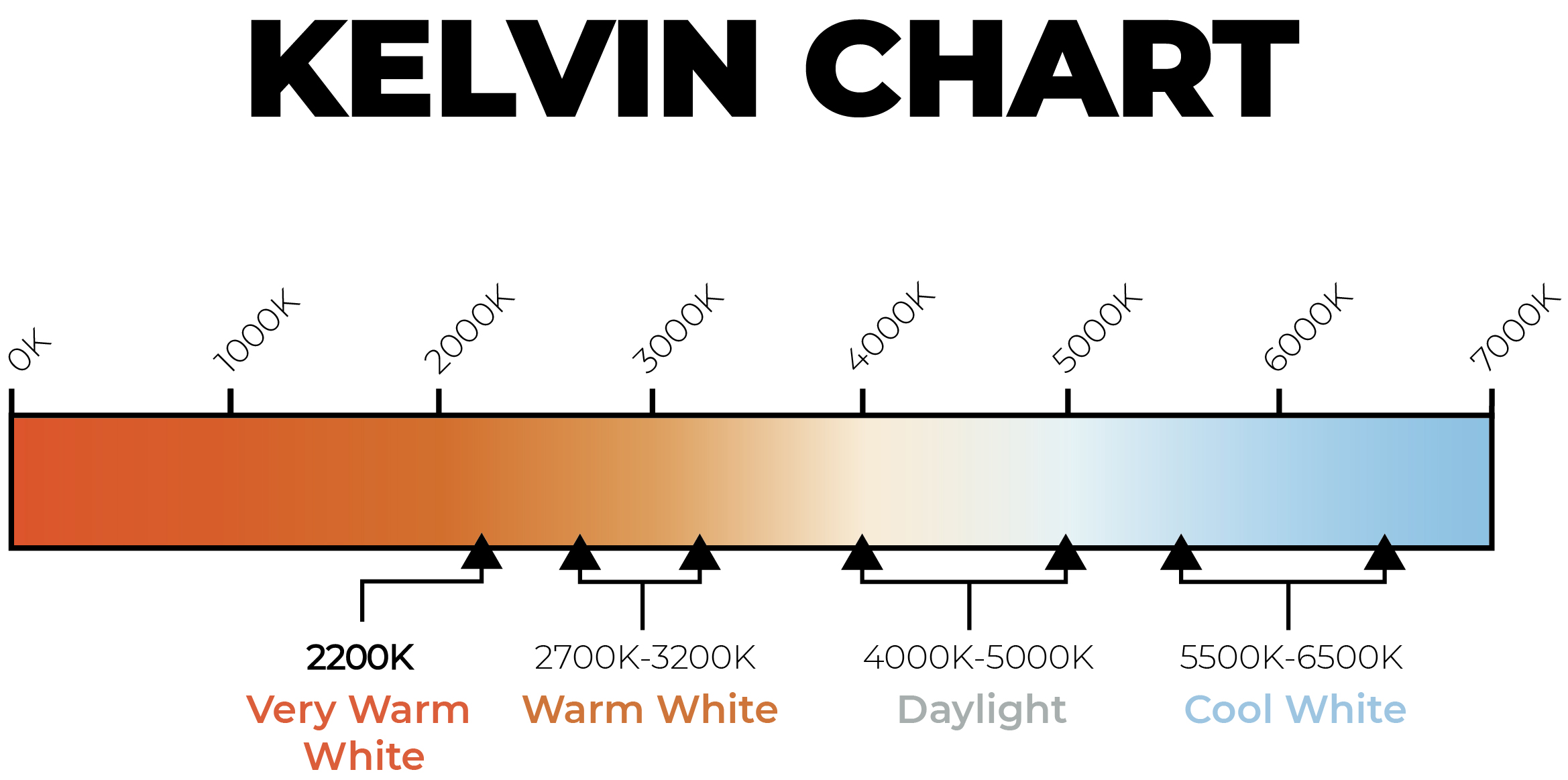Do LED Lights Attract Bugs? Shedding Light on Bug Attraction

LEDs attract fewer bugs than other lights, but certain types of LEDs will still attract insects based on their specifications. The main factors include color temperature, brightness and UV radiation. LEDs that produce a neutral white light of 3500-4000 Kelvin are more attractive to bugs than warm colors such as yellow and amber.
In addition, high brightness LEDs in the 1,100 lumen range will also attract more bugs. Most LEDs do not emit UV light, but UV LEDs specifically designed for trapping, growing plants, or sterilizing will attract bugs. In general, LEDs with higher wavelengths, lower brightness, and warmer color temperatures attract fewer insects.
In this post, we will unravel the science and practicality of LED lighting's relationship with bugs. Keep reading with us.
Why are Bugs Attracted to Light?
The night sky illuminated by a single lightbulb can transform into a display of fluttering insects. Why exactly are bugs attracted to light? Explore below to uncover the reasons behind insects' attraction to light.
Wavelength
Insects often use light for navigation, orientation, and finding mates. Light with shorter wavelengths, such as blue and UV light, tends to scatter less in the atmosphere, making it more visible over longer distances. This can lead insects to mistake artificial lights, such as streetlights or porch lights, for the moon or the sun, causing them to become disoriented and fly toward the light source.
Color temperature
Color temperature refers to the perceived warmth or coolness of light. Artificial lights, such as incandescent or warm white LEDs, emit light with a yellow or reddish tint, resembling fire color. This type of light can be attractive to certain insects, as it mimics natural light sources like the sun or fire.
Heat
Some light sources, particularly incandescent bulbs, produce heat as a byproduct. Insects are ectothermic (cold-blooded), so they might be attracted to warm light sources to regulate their body temperature. They could mistake a warm light for the warmth of the sun, which they rely on for various physiological functions.
Navigation disruption
Insects often use natural light sources like the moon and stars to navigate. Artificial lights, such as streetlights or porch lights, can disrupt their navigation systems. Some insects might mistake artificial lights for natural ones and become disoriented, leading them to fly towards the light source.
Nocturnal predators
Certain insects are naturally nocturnal predators and may use light to locate prey. Artificial lights can attract these predators, causing them to gather where the light is concentrated.
What Kind of LEDs Attracts Bugs?
LED lights emitting ultraviolet (UV) and a high blue spectrum have a strong attraction for bugs compared to other lights. Various bugs are drawn to wavelengths ranging from 300 to 650 nanometers (nm), encompassing ultraviolet light in the lower 300-400nm range as well as the broader visible spectrum beyond. Unfortunately, 400nm to 650nm covers over half of the visible spectrum, making any light source within this range likely to gather different bugs.

A significant factor tied to bug attraction is the color rendering index, which involves diverse light levels during production and spans a scale of 0 to 100. LEDs with a higher color rendering index possess an enhanced ability to display visible colors, a trait that insects find highly appealing. Therefore, LED lights with elevated color rendering indices possess an increased potential to allure bugs.
LED lamps exhibiting color temperatures between 3,500 and 4,000 Kelvin emit a neutral white light, which serves as a magnet for insects. Moreover, LED illumination achieving a brightness ratio of approximately 1,100 lumens exerts a significant pull on bugs. Such lights, commonly producing a warm white color, have been observed not to cause neurological harm to insects. Consequently, bugs are inclined to fly towards these LED lights, sometimes obstructing the light source.
What Color of LEDs Do Not Attract Bugs?
LED lights with warmer colors, specifically those in yellow, amber, and red light, are less likely to attract bugs compared to lights with cooler colors, such as blue and ultraviolet (UV). These warmer colors have longer wavelengths and are less appealing to many insects. Therefore, if you want to minimize bug attraction, opt for LED lights that emit light in the 2000-3000 Kelvin range, which produces a warm white to amber glow.

How to Keep Bugs Away from Lights?
To create a bug-free outdoor environment, you can employ several effective methods to keep bugs away from lights.
-
Using warm LED lights: Selecting warm light colors like red, orange, and yellow is advisable because they have longer wavelengths. Incorporating these warm-colored bulbs into your outdoor lighting design can effectively discourage the formation of extensive bug and insect swarms.
-
Eliminate standing water: Removing sources of standing water helps reduce bug populations, particularly mosquitoes which breed in water.
-
Consider bug zappers: Bug zappers are devices that attract bugs using ultraviolet light and then electrocute them on contact. These can be effective in reducing insect populations around lights.
-
Use essential oils: Some essential oils like lavender, eucalyptus, and peppermint have bug-repelling properties. You can create a natural repellent spray to keep bugs away from lights.
-
Install an outdoor ceiling fan: For a covered porch, installing an outdoor ceiling fan could be your solution. The fan's airflow discourages insects, as they expend more energy to navigate. So the bugs decrease noticeably.
-
Growing insect repellent plants: Strategically planting specific vegetation in your garden or on the porch can combat insect swarms around your residence. Opting for a modest herb garden on the porch can also serve as a bug repellent, requiring less effort and expense than a comprehensive garden or demanding landscaping.
LED vs. Incandescent Light Bulbs: Which is Worse for Bugs?
When it comes to attracting bugs, particularly insects like mosquitoes and moths, there is a noticeable difference between LED and incandescent light bulbs. Generally, incandescent bulbs tend to attract more bugs than LED bulbs.
LED bulbs emit light in a more focused spectrum compared to incandescent bulbs. They primarily produce light in the visible range and usually lack the ultraviolet (UV) and infrared (IR) wavelengths that many insects are attracted to. Therefore, LED lights are generally considered to be less attractive to bugs, as they emit minimal amounts of the UV and IR light that insects are sensitive to. This makes LED bulbs a better choice if you want to reduce the number of bugs around your outdoor lighting.
Incandescent bulbs emit a broader spectrum of light, including significant amounts of both visible light and infrared heat radiation. Additionally, they produce a small amount of UV light. These characteristics can make incandescent bulbs more attractive to insects, as many insects are drawn to UV and IR wavelengths. Consequently, using incandescent bulbs outdoors can potentially lead to more bugs gathering around the light source.
FAQs
1. What bugs are attracted to LED lights?
LED lights are less attractive to insects than traditional bulbs, but some, like moths, flies, mosquitoes, beetles, and midges, may still be drawn to them, especially if the lights emit warm or UV-rich spectra. Newer LEDs have insect-repelling features, but no lighting is entirely bug-proof.
2. Are bug-repellent LED lights effective and safe?
Bug-repellent LED lights are designed to emit less appealing spectra to insects, reducing their attraction. While they can be somewhat effective in deterring bugs, their efficiency varies and may not eliminate all insects. These lights are generally safe for humans and pets, as they do not rely on harmful chemicals like traditional insect repellents.
3. Can specialized LED lighting effectively repel insects?
Specialized LED lighting designed to repel insects can effectively reduce insect attraction. These lights emit wavelengths that are less appealing to bugs, such as mosquitoes and flies. While they may not completely eliminate all insects, they can help decrease their presence in specific areas. It's important to note that the effectiveness can vary based on factors like the type of insects, the light spectrum, and the surrounding environment.
These insect-repelling LED lights are generally considered safe for humans and pets, offering a chemical-free alternative to traditional bug repellents.
4. Do green lights attract bugs?
Green lights are generally less attractive to insects compared to other colors like white or blue. Insects are more sensitive to shorter wavelengths, such as blue and ultraviolet, which tend to attract them more. Green lights are farther away from these wavelengths and are less likely to draw bugs in large numbers.
Conclusion
While LED lights emit less UV radiation than traditional incandescent or fluorescent lights, they still produce some amount of blue light that can attract certain insect species, particularly those sensitive to wavelengths in the blue and ultraviolet spectrum. However, it is important to note that the attraction of bugs to LED lights is generally lower compared to other light sources.
Factors such as light intensity, color temperature, and placement of LED lights also play a role in determining their attractiveness to insects. Properly designed LED fixtures with reduced blue light emissions and appropriate shielding can help minimize insect attraction.
If you found this article useful, please share it with your friends. All comments below this post are welcomed.
Search
Be in the Know
Security insights & offers right into your inbox
